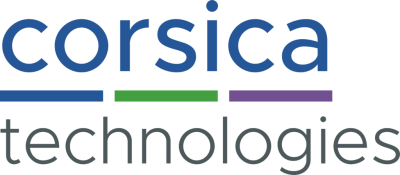
Organisations face unprecedented challenges in balancing innovation with human expertise in today’s fast-moving technological landscape. Navigating digital transformation requires more than just implementing new systems — it demands a holistic approach that places people at the centre of change.
As businesses race to modernise legacy infrastructure and embrace cutting-edge solutions, many overlook the most critical element of successful transformation. According to Kristine Duyck, VP people and organisation at LzLabs, the biggest failure in digital transformation is focusing solely on the technology while neglecting the human dimension that ultimately determines success.
How can leaders get the most out of their workforce as technology rapidly transforms the nature of work?
Technology can be an incredible support to a workforce, but it should never replace human capabilities. Digital tools can provide useful data and streamline processes, but they can’t replicate the deeper, strategic insight people bring.
The real challenge in digital transformation lies in balancing technology with the human element. You can modernise legacy systems, but understanding the intricacies behind the routines and decisions those systems make? That’s where human expertise is indispensable.
Transformation is also about change, and people do not automatically follow systems. Change has a motivational, emotional component that requires human involvement and interaction.
At LzLabs, we don’t see technology as a replacement but as an accelerator. With our Software-Defined Mainframe (SDM), we help businesses modernise without losing the value of their existing human capital.
The biggest mistake organisations can make is to treat digital transformation as just a tech issue and ignore the human side that makes it work.
How can businesses ensure they’re retaining institutional knowledge while shifting to new technologies and hiring strategies?
There can often be a hierarchical mindset in organisations, where older teams work in isolated environments using legacy mainframe technology, while younger teams are engaged with modern tools and open-source options available on the market.
For the transformations we’re doing, breaking these barriers down and bringing those different teams together is essential.
With our SDM, we can use technology to seamlessly integrate legacy systems with modern tools. This allows the mainframe team to continue working on their existing applications while enabling other teams to connect effortlessly.
This approach fosters collaboration between different teams, encouraging them to learn from one another. It creates a bridge for transferring knowledge between those who have extensive experience with legacy applications and those who are developing new applications for the business, and vice versa.
Ultimately, it’s about enabling people to recognise the value in each other’s skills and not about replacing older roles. It’s important to integrate the best aspects of both skill sets. While technology can facilitate this, it still requires a strong human element to be truly effective.
How are the skills organisations need in their workforce evolving as more technological change takes place?
It’s key that whoever manages the transformation has the technical skills to make decisions, understand and explain what’s happening at the senior stakeholder level. But it’s also really important that they have soft skills – empathy, some out-of-the-box thinking, ethical judgement and a willingness to be hands-on. You really need that combination of skills to get trust and buy-in.
Education is key – it’s vital to properly explain the new technology, and help people understand what it is, how it works, and what their role is, so they see that it makes sense and commit to it.
Trust is fundamental: the team needs trust in leadership and leadership trusting that their team can adapt once they’ve been onboarded with the new technology.
Does technological change require a complete overhaul of workplace culture and workforce restructuring from the top down, or is a more adaptive approach needed?
One of the challenges of mainframe modernisation is that many team members have spent decades working with these systems. They’re comfortable with the established systems, and their response to new initiatives may be, “Why do we need to change? What we have works fine.”
So when management proposes changes that will impact existing teams, it is essential to involve these teams in the process to help them feel invested in the outcome.
In some instances, it can help to provide teams with a clear overall direction while allowing them to determine their own paths, make decisions, and establish their own criteria for success. Technology needs to be championed from within the team and not just from sponsors.
It’s a crucial balance – you need leadership to bring the overall vision, but at the same time, you need to engage employees to ensure they maintain a sense of ownership and see the value that change can bring.
How can firms ensure technological change doesn’t impact client confidence in their products/services?
Incremental change plays a vital role in keeping clients and customers on board. The more radical the introduction of new technology, the greater the risk of losing alignment with customer needs and the higher the chances of encountering issues.
Risk reduction is essential, particularly with mainframe modernisation, as these systems are critical. Implementing small, manageable changes while setting close milestones mitigates risks. Clear communication with clients about potential challenges and a solid backup plan for worst-case scenarios is also crucial, a benefit the SDM offers.
What benefits have firms experienced by placing humans at the centre of technological transformation?
There is significant potential for human-centred change. For example, when telecommunications firm Swisscom migrated to the Software Defined Mainframe, they had to navigate that culture change, to bring their people along with them.
But having made that transition, they were able to upskill staff in modern IT practices, achieve more efficient workload consumption on the cloud, and reinvest savings in areas for innovation.
IT spending overall was reduced by 50-60%, so there’s a very tangible impact on a firm’s bottom line from getting that human element right.
The best outcome was that one of the most senior and adamant mainframe specialists became the SDM’s biggest fan of modern technology. That’s what makes us proud.
For more information on overcoming the legacy tech burden visit: www.lzlabs.com

Organisations face unprecedented challenges in balancing innovation with human expertise in today's fast-moving technological landscape. Navigating digital transformation requires more than just implementing new systems — it demands a holistic approach that places people at the centre of change.
As businesses race to modernise legacy infrastructure and embrace cutting-edge solutions, many overlook the most critical element of successful transformation. According to Kristine Duyck, VP people and organisation at LzLabs, the biggest failure in digital transformation is focusing solely on the technology while neglecting the human dimension that ultimately determines success.
For more information on overcoming the legacy tech burden visit: www.lzlabs.com






